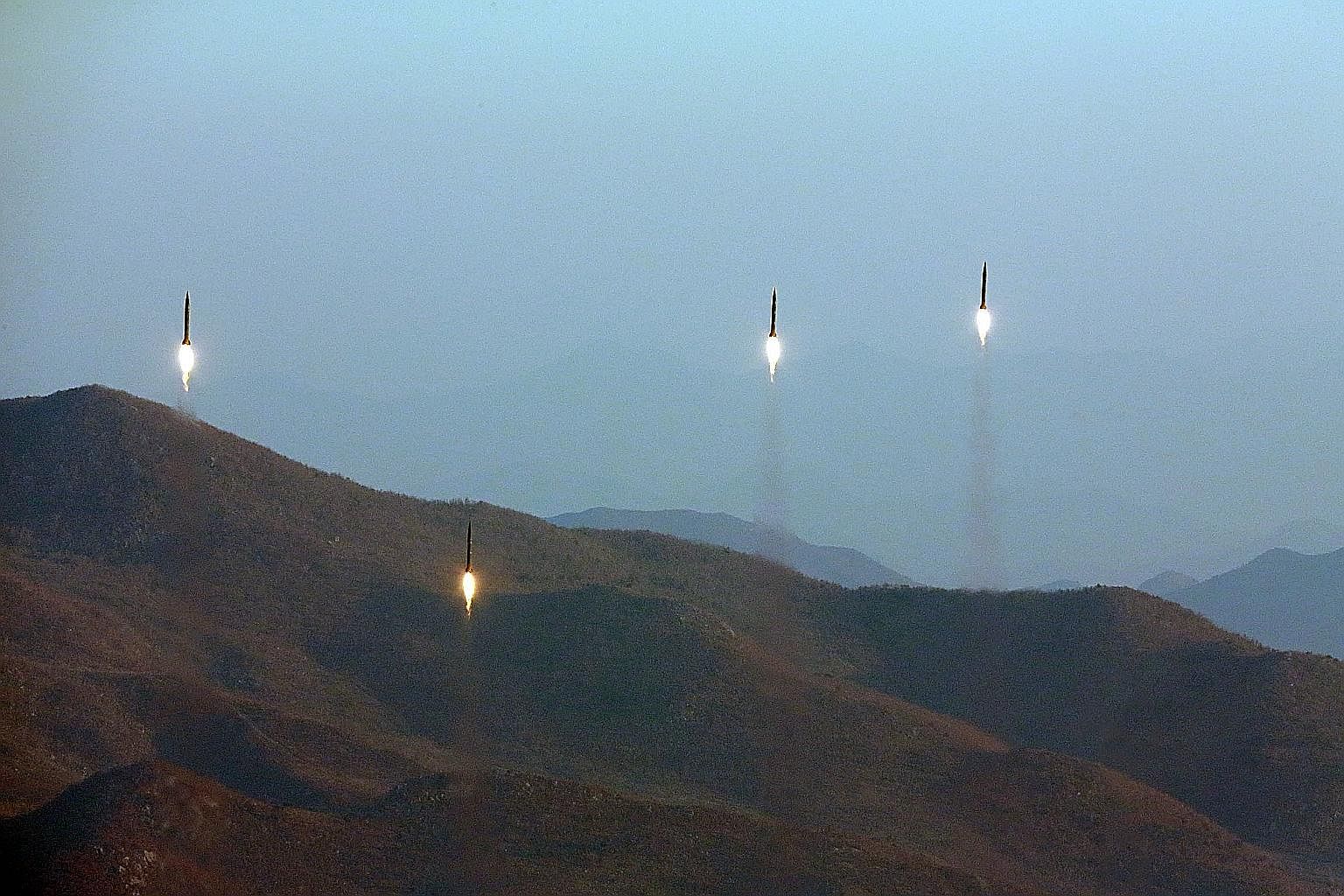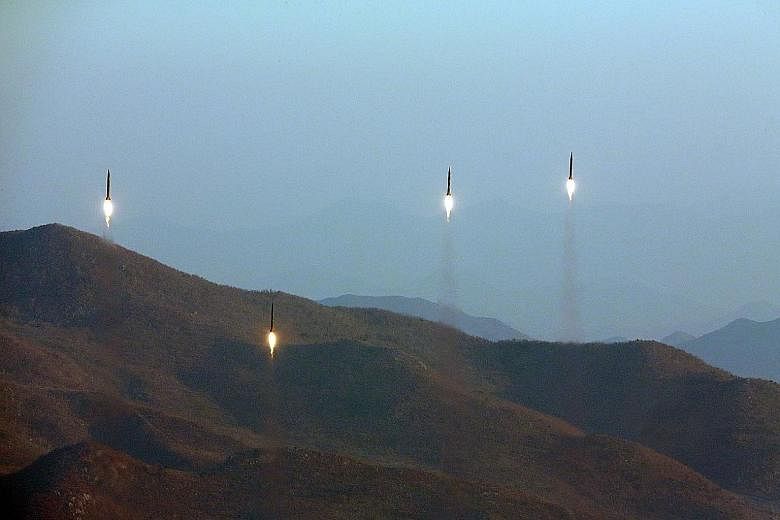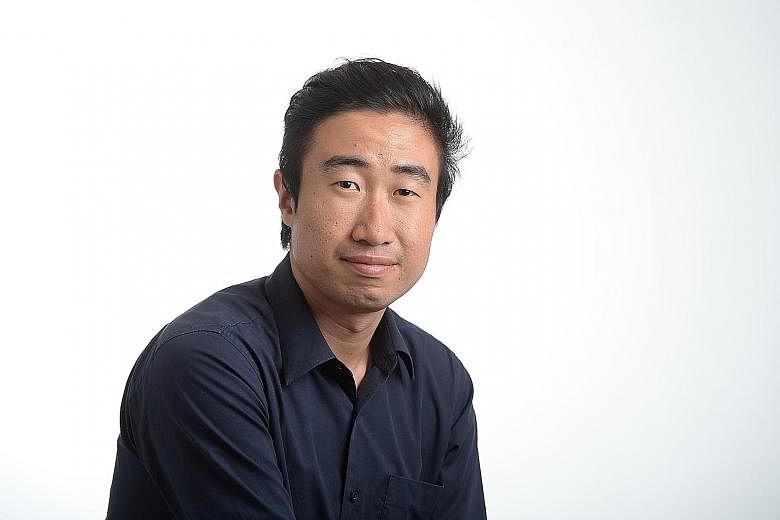North Korea's latest ballistic missile launch - a salvo of four rockets - has drastically altered Japan's security calculations and will likely accelerate upgrades to its existing defence apparatus and the roll-out of new systems.
Tokyo yesterday said that it believes one of the four rockets fell nearer to its coast than any other had before, while Pyongyang has declared Monday's launch to be a dry run for a strike against US bases in Japan.
Japan now uses a two-tier ballistic missile defence (BMD) system, which experts consider to be woefully inadequate in a "swarm attack" of multiple missiles, and talks have been going on feverishly in its Diet and National Security Council this week on further countermeasures.
Lawmakers on both sides of the political divide agree on the need to boost defence systems, but disagree on how far Japan should go to adopt offensive weaponry.
Mr Hiroshi Imazu, who chairs the ruling Liberal Democratic Party's (LDP) policy council on security, said: "It is time we acquired (more) capability... without a deterrence, North Korea will see us as weak."

-
What Tokyo may acquire
-
BALLISTIC MISSILE DEFENCE
Considering:
• Terminal High Altitude Area Defence, which can destroy missiles inside or outside the earth's atmosphere.
• Aegis Ashore, a land-based version of the SM-3, which can intercept submarine-launched ballistic missiles.
OTHERS
Japan ordered 42 US F-35A fighter aircraft last year. It also has the Chu-Sam, a domestically developed medium-range surface-to-air missile, which can engage modern aircraft and cruise missiles.
Considering:
• Different forms of cruise missiles, including long- and short-range, and air- and sea-launched weapons.
Walter Sim
Meanwhile, former vice-defence minister Akihisa Nagashima of the opposition Democratic Party told The Wall Street Journal: "We have to face reality. If we do nothing and let them strike us, it is irresponsible."
Japan's two-layer BMD comprises the sea-based SM-3 placed on Aegis warships that can destroy missiles in space, and the land-based PAC-3 batteries that strike missiles as they near the ground.
Security expert Tosh Minohara of Kobe University noted that Japan's missing link is a weapon that can shoot down ballistic missiles in the middle of their flight trajectories.
To plug this gap, Japan is considering the Terminal High Altitude Area Defence (Thaad) system, which can intercept missiles both inside and outside the earth's atmosphere, and a land-based version of the SM-3 that Dr Minohara said is best suited for submarine-launched ballistic missiles.
"Adding another layer of defence will give Japan the capability to deliver a one-two-three punch," he said, although a swarm attack of multiple missiles will still likely overwhelm defences.
Defence Minister Tomomi Inada said yesterday that Japan is open to getting weapons that can pre-emptively strike enemy bases.
This pushes the limits of Japan's pacifist Constitution, but backers like former defence chief Itsunori Onodera of the LDP have argued that such strikes, against an imminent threat, do not run afoul of the law. He said: "If bombers attacked us or warships bombarded us, we would fire back. Striking a country lobbing missiles at us is no different."
Beyond weaponry, what is also needed is closer cooperation and intelligence sharing by the United States, Japan and South Korea, editorials in The Japan Times and Yomiuri daily said.
This requires much political will as ties between Tokyo and Seoul remain clouded by unresolved "comfort women" issues. South Korea's opposition is also against the landmark direct intelligence-sharing pact the country inked with Japan last year.
Calling for "closely coordinated responses", The Japan Times noted: "Neither Japan, the US nor South Korea is said to have been able to detect advance signs of the latest firings, because North Korea likely used solid-propellant rockets and mobile launch vehicles."
Solid-fuel missiles require fewer support vehicles and less time to gear up for launch than rockets using liquid propellant.
And unlike fixed launch sites, mobile launch pads make it harder to detect precise firing points. North Korean missile launch trucks, fitted with tracks instead of wheels, also have off-road capabilities.
As US bases in Japan have been the declared target, Dr Minohara believes the US will marshal its two allies to work closer together, with Thaad's roll-out in South Korea.
He said: "It is interesting to note how the Thaad in South Korea will also be able to protect Japan. I think a new form of security paradigm will develop between the two countries."



